Research Projects: Mycobacterium tuberculosis
Overview | Project page
Overview | Project page
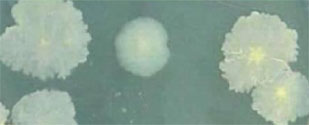
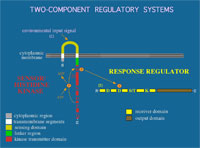
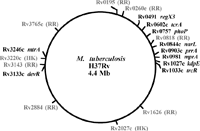
click on diagrams for larger image
The emergence and incipient spread of antibiotic resistance, including multi-drug resistance, jeopardizes our abilities to fight infectious diseases in all people within all communities, and therefore poses an incredible global threat to public health. Antimicrobial agents traditionally target pathways and/or processes in the cell that are essential for their viability or survivability within the human host, while leaving host cells unaffected. Therefore, regulatory proteins that are essential for viability or control critical virulence factors represent auspicious targets for the development of novel antimicrobial therapeutics. Two-component systems embody such regulatory models as they are ubiquitous among bacteria, but not found in humans; have conserved structural homologies, particularly surrounding catalytic sites; are essential for viability in several pathogens; are critical for bacterial virulence; and are required for bacterial adaptation in various disease processes.
The prrA and prrB genes constitute an operon and are cotranscribed during logarithmic growth, with transcriptional levels decreasing in stationary phase and during hypoxia. Despite the transcriptional differences, PrrA protein levels remained relatively stable throughout growth and in hypoxia. Under conditions of nitrogen limitation, prrAB transcription was induced, while acidic pH stress and carbon starvation did not significantly alter transcript levels. Deletion of the prrAB operon on the chromosome of M. tuberculosis H37Rv occurred only in the presence of an episomal copy of the prrAB genes, indicating that this two-component system is essential for viability (Haydel et al. 2012).
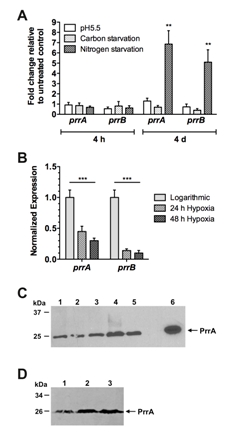
Ongoing goals of this research are to
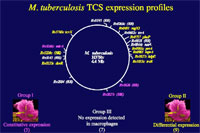 click on diagram for larger image
click on diagram for larger image
The Rv1626 response regulator gene is expressed after 18, 48, and 110 h of M. tuberculosis intracellular growth, while expression of the Rv3143 orphan response regulator gene was not detected during M. tuberculosis growth in human macrophages (Haydel and Clark-Curtiss. 2006). However, in another study, the Rv3143 gene exhibits a similar expression profile in macrophages to the mprA response regulator gene which is required for maintaining a persistent M. tuberculosis infection. The Rv1626 and Rv3143 mutants will both be analyzed to determine the regulons and their roles in M. tuberculosis pathogenesis and/or physiology.
The high resolution crystal structure of Rv1626 demonstrates that the N-terminus harbors a prototypical receiver domain with a C-terminal domain exhibiting structural homology to a unique RNA binding domain involved in transcriptional antitermination (Morth et al. 2004). Demonstrated phosphorylation relay between the Rv3220c orphan histidine kinase and Rv1626 establishes these proteins as a two-component regulatory circuit (Morth et al. 2005). Due to the unique putative function, Rv1626 is designated a phosphorylation-dependent transcriptional antitermination regulator (PdtaR) and its cognate histidine kinase, Rv3220c, a phosphorylation-dependent transcriptional antitermination sensor (PdtaS). Efforts are underway to understand how this unique response regulator controls transcription via antitermination and its role in M. tuberculosis pathogenesis.
Crystal structure of the PdtaR transcriptional antiterminator (A)
and the superimposed ANTAR domains of PdtaR (red) and
Pseudomonas aeruginosa AmiR (cyan) (Morth et al. 2004).

Autoregulation of the TrcR response regulator occurs via binding of an AT-rich sequence within the trcR promoter (Haydel et al. 2002). The AT-rich characteristics of the trcR promoter were used to identify the Rv1057 gene, which is repressed by TrcR (Haydel et al. 2006).
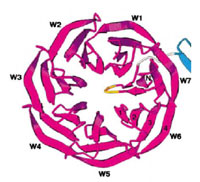
The Rv1057 gene is expressed during M. tuberculosis growth in macrophages, and the protein appears to be a seven-bladed β-propeller of unknown function (Haydel et al. 2006). Rv1057 is activated by detergents, vancomycin, and surfactant proteins, suggesting it also has a role in maintaining envelope stability (Pang et al. 2011). Recent findings indicate that Rv0157 has an extensive and complex promoter that is directly regulated by both the MprAB and TrcRS two-component systems (Pang et al. 2011).
Goals of this research are to